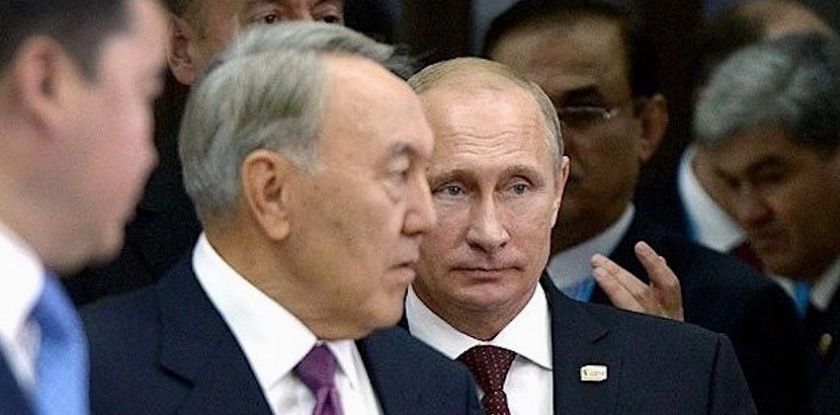In today’s Kazakhstan, instead of the open political fight for the power, we are observing a brutal war between different clans and groups for a place in the administrative system. As the Soviet history teaches us, such war can lead to replacing the obvious type of the totalitarianism that sometimes takes the absurdist forms for a new intricate system that is in fact a social network consisting of influential political groups.
This does not change the pyramid-like form of the entire system but makes it an almost exact replica of the feudal structure. Therefore, in such a system, all the forms of the political competition morph into feudal wars that bear no resemblance to the modern political system that ensures the mechanisms of the economic growth based on investments and domestic demand. On the other hand, this system seems to be much closer to the Soviet one that had emerged after the death of Josef Stalin.
Bulldogs’ Fight under Syrmak
On the competitive political market where the winner receives the temporary political power monopoly, the opposition may hope to win the next (inevitable) elections. Thus, the opposition is fighting for the power but not for a place in the Sun.
Replacing the political system for a stiff administrative vertical does not eliminate the power war. But this war takes the form of the infamous bulldogs «fight under a rug. An outsider only hears the growling, and when he sees the bones fly out from beneath it is obvious who won».
The authorship of this metaphor is thought to belong to Winston Churchill who, supposedly, used to describe the Soviet political system. However, Churchill did not need metaphors to describe it since he knew full well about the laws that guided the political fighting in the Soviet Union. As likely as not, this phrase was universal and was used to describe any political system that existed according to the laws of the power vertical. This is why the «bulldogs under the rug» metaphor has outlived the Soviet Union and continues to enjoy success in the systems where open pollical activities are de-facto forbidden.
The modern Kazakhstan is one of the living proofs of this principle. The liquidation of the political market in the country has led to the situation when the conflict between the clans and political groups is now hidden under the local rug and, therefore, presents a threat to the national security and the country’s future. And, as the Soviet history teaches us, such as a likely scenario.
Stalin and the Clans
The Soviet political system is often described as a stiff hierarchy at the top of which there is a leader that controls all the levels of the vertical and places his people at the commanding heights. This is a correct presentation but not at all a comprehensive one. It does not reveal the existence in this power pyramid of an internal relationships tangle between different groups that can be called political clans.
Such clans had existed in the USSR since the very moment of this country’s emergence on the political map of the world. The thing is that, after seizing the power in 1917, the Bolsheviks were forced to rely on the support of the ethnic minorities that, in their search for the national self-expression, were interested in the liquidation of the Imperial system of the governance like nobody else.
This support had helped the Bolsheviks to win the civil war and to consolidate the power. But, very soon, they had started to suppress any attempts to express the national self-actualization. By the end of the 1930s, such attempts were completely over. And even the most powerful Kavkaz clan had found itself threatened by its main patron, Josef Stalin.
The ethnic minorities were replaced by the groups formed inside the administrative vertical. Stalin was balancing their interests and suppressed any consolidation attempts. Note that, in respect to the USSR, it meant physical destruction. This, however, still did not stop the groups from emerging. Such groups were formed on two principles — geography and political functions. The former was founded on the Party basis, the only element in the Soviet governance system that had preserved the true territorial autonomy.
In complete accordance with this principle, the regional Party organizations were the centers of the Soviet clans. And the main one emerged in Leningrad. It was the second politically important local Party organization after Moscow. As for the degree of its autotomy, in was the leader of the nation.
The irony is that, after several unsuccessful attempts, the St. Petersburg group did manage to seize the power. Of course, this happened already after the collapse of the USSR and the demise of the Communist Party.
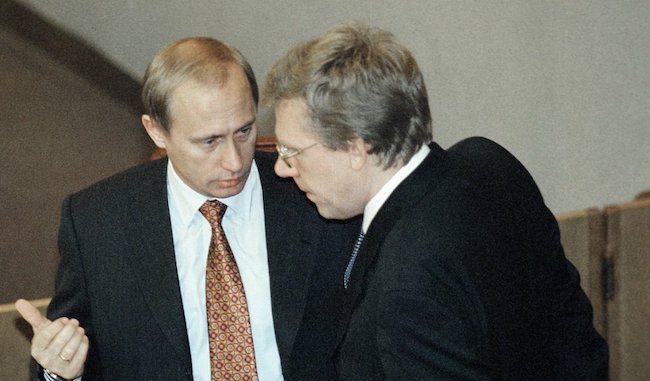
St. Petersburg 1.0
Supposedly, the Leningrad Party autonomy centered around Sergey Kirov who first launched a challenge against Stalin at the 17th Party Congress in 1934 and was killed later. In reality, regardless who and why killed Kirov, the Leningrad Party Organization became the actual center of political autonomy during the term of Anrdey Zhdanov who replaced Kirov as the organization leader.
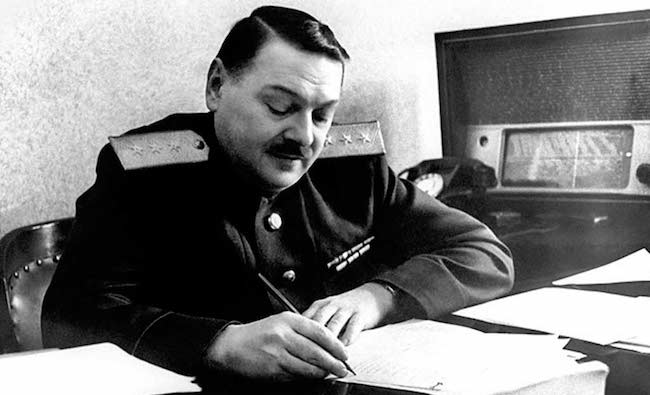
Zhdanov was the head of the local Party organization from 1934 to the beginning of 1945. Unlike his carefree predecessor, Zhdanov chose not to appear in the public eye preferring the systemic organizational work. So, in a few years, Zhdanov had managed to gather a team of allies and placed them at the highest-power positions in Leningrad. He then promoted them to the next administrative level.
Zhdanov chose three directions for the expansion of his influence — the Party organization, the ideology (this sphere was supervised by Zhdanov himself), and the national economy management. The latter became the first destination for the expansion — at the end of the 1930s, Zhdanov’s appointee Nikolay Voznesensky became the Head of the Gosplan and was de-facto in charge of the routine governmental operations.
It was during that time that Alexey Kosygin who, in just few years, had made an outstanding career in Leningrad had moved to Moscow. Back in 1936, he was a weaving factory worker. The next year, he was already the director of a confectionery factory and, in 1938, became the Head of the Department of Industry and Transportation of the Leningrad Regional Party Committee.
In 1939, already in Moscow, Alexey Kosygin was appointed the People’s Commissar of the USSR Textile Industry and, in April 1940, he became the Deputy Head of the Sovnarkom and the Mass Consumer Goods Council.
The expansion of the Zhdanov group was slowed by the beginning of the World War II and continued just after it ended. It was then when the organization’s Party front was formed. It was then when the star of Alexey Kuznetsov, Zhdanov’s successor as the Leningrad Party Organization leader, had risen. He took the position in 1945. In 1946, he replaced the temporarily dismissed Malenkov in the Central Committee and was put in charge of all the personnel appointments at the Party bodies. As the Party representative, he supervised the national security agencies and the Public Prosecution Office (in place of Lavrentiy Beria).
However, something happened in 1947 which perhaps was fatal for the Leningrad clan. Josef Stalin invited Vyacheslav Molotov, Lazar Kaganovich, Lavrentiy Beria, Georgy Malenkov, and Anastas Mikoyan to his dacha in Ritsa in Abkhazia and introduced the young and energetic Alexey Kuznetsov as his own successor along the Party line.
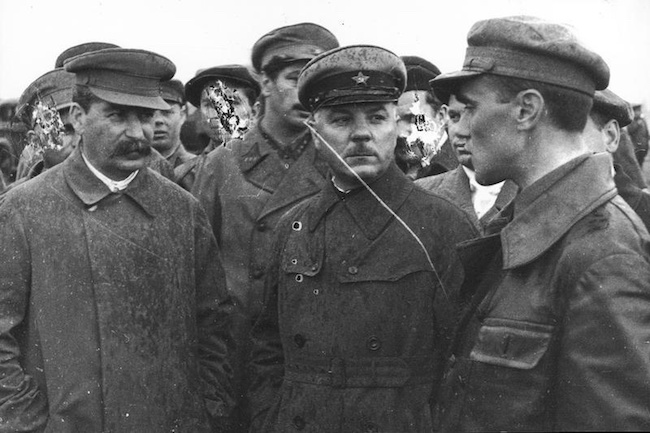
In any political system built on the principle of the administrative vertical, such an announcement equals the take them! command for all the parties concerned. Beria and Malenkov (we will tell you about this clan in our next publication of the series) were the most keen receivers of the news since they had suffered from the Leningrad group’s pressure more than anyone. But as long as Zhdanov was in power, they could do nothing.
The situation changed in August 1948. The patron of the Leningrad clan died in a Valday sanatorium after a concilium of doctors had incorrectly diagnosed him despite the protests of regular doctor Lidiya Timashuk who had correctly diagnosed Zhdanov with a heart attack. And, several months later, the «Leningrad clan massacre» began.
It began in the geographical center of the clan. In December 1948, the top staff of the Leningrad Party Organization were accused of falsifying the results of the new leader’s elections. Then, they added the archenemy, Alexey Kuznetsov, to the list of the accused. Georgy Malenkov accused him and Chairman of the Council of Ministers of the RSFSR M. I. Rodionov of holding the unauthorized shopping festival in Leningrad (although the festival was in fact approved by the Council of Ministers’ decree).
Then came the turn of the oldest «Leningrader», Nikolay Voznesensky. He was accused of falsifying the statistical data, removed from all his posts in March 1949 and arrested at the end of that same year.
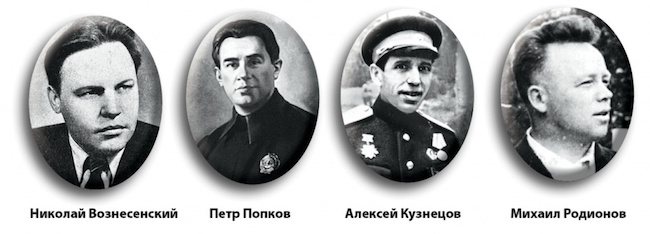
All in all, 214 people were convicted re the Leningrad case (69 — the main parties accused and 145 — their close and distant relatives). 23 people were sentenced to death by the military collegium. For this, they even had to lift the ban on death penalty introduced in 1947. Apart from that, during the period from 1949 to 1952, in Leningrad and the Leningrad region alone, more than 2 thousand people were removed from their posts and expelled from the Party.
From that moment on, the debates on what this clan was really like, who was behind its massacre and how the Leningrad clan could have changed the flow of the Soviet and world history had they managed to seize the power have been continuing.
Let us try and perform a deconstruction of this clan.
The Clan’s Geography and the Family Connections
The biggest part of the Zhdanov group did indeed consist of the Leningrad natives. But it was not limited to the region. For example, Mikhail Rodionov who had previously been in charge of the Gorky Regional Party Committee and, at the moment of his arrest, served as the Chairman of the Council of Ministers of the RSFSR, was a notable figure in «the Leningrad case».
Rodionov’s Gorky origin is not coincidental. Zhdanov had worked in this city prior to his Leningrad appointment. Thus, Rodionov was not an exception but rather the logical addition to the geography-based foundation of the clan. Even in the Soviet Union with its centralized system of decision-making all tied up in Moscow, geography played a crucial role. For a large part, this was facilitated by the Party system that was organized based on the geography principle and that was in charge of monitoring the entire personnel policy in a given region.
In the Leningrad organization, the Party principle was accompanied by the family connections (several key leaders were related to each other); however, the latter had never played the systemic role. It was a social network of the people appointed to their posts based on the political principles.
The Internal Policy Line
The existence of its own ideology is the main controversy surrounding the Leningrad group. This ideology is believed to be the orientation towards creating a Russian Communist Party and solidifying the role of the RSFSR inside of the Soviet Union. It was also supposed to shift the economic priorities to producing consumer goods.
The «Leningraders» were accused of aiming to create real political institutes in Russia by the investigative authorities. But, looking at it today, such accusations rather testify to the fact that no ideology existed. What did exist was simply an ordinary fight for the best place in the sun under dictatorship.
Nonetheless, in the archives, one can find preparation materials for the XIX Party Congress of 1947-1948 where they were supposed to adopt a new Party program and introduce the changes in the Party Rule Book. This congress did take place albeit much later, in 1952, and was held by a completely different team of people (Malenkov was the one making the official report). As for the new program of «Building the Communism», the Party adopted it only 10 years later, in 1961. Both delays reflected the presence of an evident crisis both in the organization and the ideology of the Party.
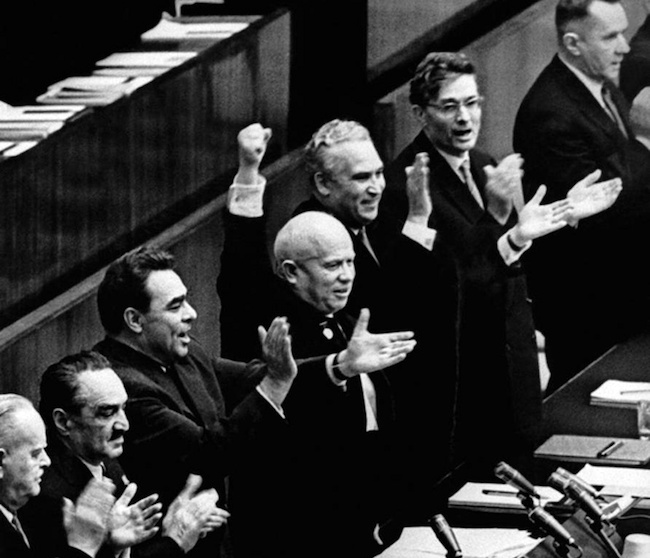
The «Russian question» in the «Leningraders"’ ideology appears only in the memoirs written significantly later and by third parties. There is, however, an indirect link. The thing is that it was no other than Anatoly Sobchak, the ideological father of today’s St. Petersburg clan, that first raised the question of removing certain republics from the Soviet Union.
Link of Times
Anatoly Sobchak appeared in the political arena with the support of Mikhail Gorbachev who, in his turn, came to power relying on the support of two people connected to Zhdanov and his group. They were Yuri Andropov and Mikhail Suslov. The former was a North-West native brought to the political Olympus by Zhdanov himself.
However, these ties had only a hypothetical influence on the events of our time. In this regard, the political biography of Alexey Kosygin, a prominent representative of the Leningrad group who, in 1948, already managed to obtain the post of the Minister of Finance having muscled out the omnipotent Arseniy Zverev, is of much more interest.

The Leningrad massacre did not destroy Alexey Kosygin. Not only had he managed to protect himself, he also got back his place on the political Olympus and, in 1964, due to Nikita Khrushev’s resignation (he was a member of Georgy Malenkov’s group) was appointed the Head of the Government. After this, there had been attempts to introduce an element of independence in making managerial decisions based on the free-market principles.
Does this mean Kosygin was trying to implement that same program that the Leningrad clan wanted to introduce at the end of the 1930s? We can only speculate on this subject.
Stalin and the Big-Time Politics
Regardless of how serious the ideological platform of the «Leningraders» was, their main driver, of course, was to claim the place in the highest echelon of power. But not on the very top. Note that it is precisely this characteristic that distinguishes democratic systems from administrative one. And this is why it is unlikely that the Leningrad clan’s opponents from Stalin’s circle were responsible for its destruction.
Malenkov later said that he had acted on Stalin’s order. We may not trust his words but, at the same time, it is hard to imagine that someone would dare to perform the physical destruction of the person introduced as Stalin’s successor in front of the dictator’s eyes. It is logical to assume that it was Stalin himself who ordered the destruction of the consolidated clan. Nothing personal, just good old realpolitik.
And those who are trying to strengthen their position next to today’s dictators must remember that.
NOTE FROM EDITOR
It looks like Kazakhstan should expect the reoccurrence of the internal political processes that had taken place in the USSR during the last years of Josef Stalin’s and Leonid Brezhnev’s reign. Stalin’s reign peaked during the repressions of the beginning of the 1950s that included the «Leningrad case» and the repressions against the military. The peak of Brezhnev’s reign included the resonant criminal cases of Schelokov, Medunov, the «Cotton case», etc. Regardless of who initiated the investigations and how well-founded the accusations were, they had helped those who, eventually, managed to seize the power, destroy the opponents, and muscle out the competitors.
In this series, we will not draw parallels between the events of the end of the 1940s — the beginning of the 1950s in the USSR and what has been happening in Kazakhstan in the recent years. We simply want to draw the reader’s attention to the fact that the human nature doesn’t change and, therefore, by understanding the past, we may have more success in predicting the future.

